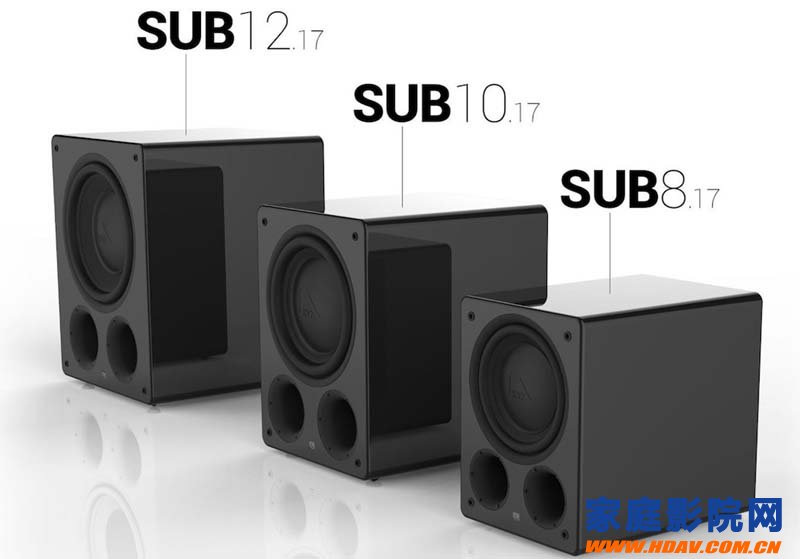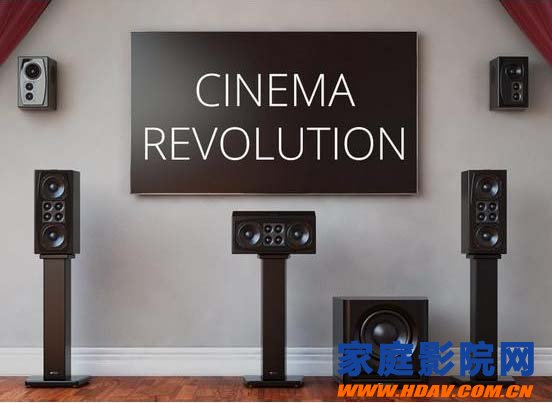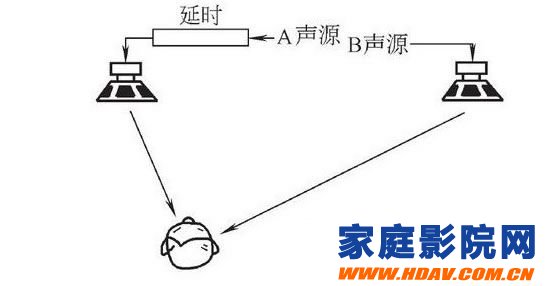[Home Theater Network HDAV.com.cn] In the home theater, you want to get more realistic low-frequency sounds such as lightning flash , artillery roar, aircraft landing, train travel, etc., experience the immersive sense of the scene, shock Feeling, feel the atmosphere of a large cinema, subwoofer (commonly known as "subwoofer") is indispensable. Of course, some people use subwoofers to make up for the lack of low frequency in the main speakers. However, no matter how you use it, the basic positioning and adjustment principle of the subwoofer is to be observed. The home theater network editor specially edits the content of this aspect for audio and video enthusiasts to refer to. In fact, for audio and video designers, this article also has certain For reference.

Start with the basic adjustment of the listening area
In order for the subwoofer to perform as desired, you have to do some processing on the listening room. In general, the larger the area of ​​the listening room, the less the low frequency standing wave problem that can be heard. In order to get a smooth and balanced low-frequency sound, the ceiling of the listening room should be no less than 3 meters, the width should be no less than 3.6 meters, and the length should be no less than 7.5 meters (if you want a deeper low frequency, you must be no less than 9). Meter). The length of each side of the listening room (including the diagonal) should not be an integer multiple of the wavelength of the sound wave, otherwise resonance will occur. Of course, the listening room needs to be acoustically processed regardless of its size to control the time of the sound wave reflection to obtain a uniform sound field, but the standing wave is generally not formed in the large listening room.
Another important point is the use of sound absorbing materials, so that the decay time of the low frequency is generally the same as the intermediate frequency and high frequency. This is what people call a "neutral listening room." The light and flexible walls act as good sound-absorbing walls, where low-frequency sounds will pass through the walls and never reflect. This effect can be achieved by walls constructed of gypsum board, wood and double-layered stone in the correct structure. A world-class listening room usually requires the use of sound/scatter materials to eliminate resonance or echo. However, building a large listening room with good low-frequency response, correct internal acoustic design and first-class external sound insulation is a professional audio designer, not to mention more here.

How to place the subwoofer
Before placing the subwoofer speaker, assume that: 1. You have a healthy ear that can evaluate the sound characteristics of the listening area; 2. You just use two or more subwoofers; 3. You have The appropriate test signal software can test the characteristics of the sound field at different positions you hear at the listening position, and how the listening area affects the sound; 4. The necessary Sound System calibration work has been completed.
The position and correction of the subwoofer can be divided into five steps: 1. adjustment of the position of the subwoofer; 2. adjustment of the seat of the listener; 3. phase adjustment between the main speaker and the subwoofer; Balance of various parameters; 5. Subwoofer to match the gain of the main speaker.
There are different ways to determine the optimal placement of multiple subwoofers. Here is a basic one that I hope will help you.
1. Divide the floor of your entire listening room into a number of blocks of about 0.2 square meters (such as 20 cm x 100 cm). Once these blocks are divided, your listening position can be tested in these blocks. If you are worried that this will leave a tape on the floor, you can choose tape that will not leave a mark.
2. Make a table and systematically record how you feel about listening to a subwoofer in each area. If you don't record this data, you can easily forget the feeling of listening in each area.
3. If possible, remove the seats in these listening blocks and place the two subwoofers in the center of the listening area, towards the center axis of the longest side of the listening room.
4. Adjust the gain of the two subwoofers down, set the equalizer on the decoder to the “flat†position, and play the test music through the left, center and right channel speakers to increase the gain of the two subwoofers until You heard their sounds in the mix sound. Then turn the gain up a bit and then turn it down until you can just hear the sound effects they appear. The final fine-tuning is going on, and now all you have to do is get a reasonable, useful playback volume from the subwoofer. Once this volume is set, turn off all channels. At this time we can set the crossover point of the subwoofer to this frequency (such as 80Hz).
Once you have set the crossover point and the sound is best, move to another seat and repeat the process. This way you will eventually find the best crossover frequency for a comprehensive sound. When you enter the equilibrium phase, you will find it necessary to adjust the crossover point.
5. Set your CD, DVD or BD player to loop playback, then listen to each block and record your hearing experience.
You will notice that in some blocks, the balance of sound is much better than in other blocks. Record it in your form. Once you have tried it in every block, go to the front and move the subwoofer along the axis you have chosen to make it farther away from the wall. Then listen to each location in the listening room, record the feelings in each block, and note in which blocks the sounds sound particularly good or bad. It won't take long for the sound block to sound good and bad mode will come out. Repeat the above process until you are satisfied with the sound of the subwoofer in one of the placed positions. Finally, make a note of the best listening blocks for each subwoofer. From the table you recorded, you will find the best position for the subwoofer.
6. After finding the best sound block in the listening room, move the subwoofer to some position and perform a listening test. This time, go to the block in the original listening area and move the seat position to improve the sound of the subwoofer in the listening area. If you are unable to move the seat by a wall or other object, you can save this step.
7. Once you have found the “best effect†point for the subwoofer and listening position, turn all the channels on and adjust the gain of the subwoofer. Welcome to the home theater network shopping guide network!
This is a process that requires trial and error, and you may want to listen to the same content over and over again. When you are bored, sit down and rest for a while to minimize the effects of hearing fatigue. Take notes every step of the test. Use some of the graphs to write down some details, such as speaker placement and setting parameters, so that when you feel that the sound is not as good as an hour ago, you can follow the record. Table, try to adjust back to the previous state. Although it is trivial to record, it can improve work efficiency as a whole.

Phase and delay adjustment
In general, the phase of the speaker can be understood as the connection between the positive and negative output terminals of the amplifier and the positive and negative terminals of the speaker. Red (positive) corresponds to red, black (negative) corresponds to black as positive phase; black and red are connected. Negative phase. Adjusting the phase settings (usually adjusted on the subwoofer and, if necessary, on the decoder) will make the overall sound of the main/subwoofer more balanced. But on a certain phase, you may hear more or less low frequencies, and changing the phase will have both positive and negative effects on the acoustic sound you hear.
Delay adjustment and phase adjustment are almost simultaneous, because when you adjust the delay parameters, the phase is often changed. The delay can be seen as an electronic method of systematically placing subwoofers or reducing the difference in signal transmission paths between subwoofers. Delay adjustments can be made with different goals, which are often used in professional audio and home audio. Some people find it easier to ignore the phase settings and put their energy on the delay. In the integration of the subwoofer sounds, the delay can be used to bring the direct sound from the subwoofer and main speakers to the listening position at the same time.
Knowing the speed of the sound, you can quickly calculate the difference in signal transmission distance in a variety of placement modes, and calculate the delay. For example, suppose your left, right, and center main speakers/front subwoofer are 5m away from the listening position, while the rear subwoofer is 1m away from the listening position, then 5m–1m=4m. So you need to delay the rear subwoofer with 4m. In this way, the sound from the main left, right, center/front subwoofer and rear subwoofer can reach the listening position at the same time.
Want to be more precise, you can set the balance
Here's a more efficient method. Suppose you're using a parametric equalizer. This equalizer is a great device for fine-tuning subwoofers. It adjusts the gain, bandwidth, and frequency of the subwoofer. Together, you can effectively adjust the low frequency spectrum.
When your equalizer's equalizer is set to 0, play your test software and hear if there are any peaks in the frequency response. If necessary, you can do this test in every seat in the listening area. During the period, you should pay more for the audible resonance. Set the main speaker and subwoofer to the on state, select a correct band point, and adjust an appropriate gain value, such as +3 to +4dB and a higher equalization value Q. Then slowly increase it and then lower the frequency. You have to find the most obvious frequency point of the gain, you may need to do it several times. Once the maximum frequency gain effect is found, you find the resonant frequency. Slowly reduce the gain of that frequency until the peak disappears and replace it with a balanced and neutral sound. Now change the equilibrium Q value until the sound you hear is more balanced and natural. Adjust the gain value if necessary. Repeat the above procedure for other slightly lower amplitude resonant frequencies until you are satisfied. Finally, you can listen to the seats in the listening area and check the effect.
In this way, in the constant adjustment and testing, find the placement and parameter settings of the best performance of the subwoofer. Welcome to the home theater network shopping guide network!
How to fix the speaker
Generally, the subwoofer does not need a stand, and most of them are placed on the ground. It is necessary to pay attention to eliminating the coupling effect between the speaker and the floor. However, if you need a gantry, you should pay attention to: 1. The heavy and hard tripod has a top that is no larger than the bottom of the speaker to avoid the diffraction of sound (this is a kind of comb filter); 2. The stud stability effect is good, However, when using it, it is easy to puncture the carpet and make adjustments.
It has also been suggested to place a cushioning mat under the heavy speaker instead of the stud. Regardless of the placement method, the goal is to reduce resonance and conduct sound waves between the cabinet, the floor and the wall. In addition, make sure that the resonance frequency of the cabinet and the tripod is very low. You can knock the box with a fist to confirm that it has no resonance characteristics, or input a sine wave signal to your Audio System to determine if the cabinet has vibration.
The speaker can be mounted in a small hole in the wall, and the front panel of the speaker is flush with the wall (embedded speaker). This type of installation requires the skills of a professional sound engineer. There is not much discussion here.
When setting and adjusting the subwoofer, consider the size of the listening area and the ability of the air it surrounds to store energy. Repeated testing is the most practical way to get the best sound. However, there is no perfect position in reality. You can only find those positions that are close to perfect. You need to adjust your mentality and make some compromises in some aspects. More fresh and fun home theater information, please pay attention to home theater network http:// (WeChat: cnhifi), the country's most influential home theater audio player interactive media website.
Sound System,On Wall Speakers,Home Theater System,Wireless Home Theater
The ASI Audio Technology Co., Ltd , https://www.asi-sound.com